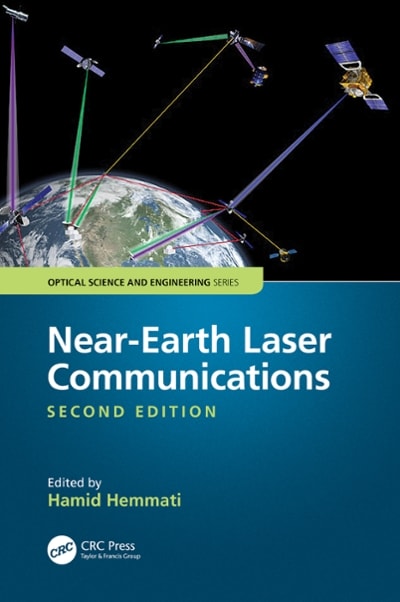Question
https://www.compadre.org/Physlets/thermodynamics/prob19_6.cfm Open the simulation and click on the triangle run symbol. Let it run for the full 15 seconds. It will appear as below The
https://www.compadre.org/Physlets/thermodynamics/prob19_6.cfm
Open the simulation and click on the triangle run symbol. Let it run for the full 15 seconds. It will appear as below The figure on the upper right is a portion of the figure from the lecture--the latent heat of fusion curve for water and ice (to provide relevance). Here we have the same curve for a metal. It basically heats up as 2400 W of heat flows into it, as a solid; then its temperature stays constant as it melts for the "latent heat" portion of the curve; and then rises again as the melted metal absorbs heat. We will use data from the simulation to calculate the unknown metal's specific heat and latent heat of fusion. The specific heat equation is Q = m c (T2 - T1). The latent heat equation is Q = m Lf. Our goal is to calculate "c" and "Lf" from the red curve in the simulation, and then to identify the unknown metal concluding with an error analysis. Let's review the concepts. 2400 W of power is flowing into the metal, starting at t = 0 s. Its initial temperature is 540 K as is indicated in the red metal substance. It heats up, meaning its temperature steadily rises. Then at about t = 3 s, its temperature levels off, at nearly 600 K This "levelled off" portion stays at this temperature, as more heat energy continually pours in. This is "classic" latent heat behavior. It has become fully melted when the temperature curve starts back up again, at about t = 13 s. Now the heat is flowing into melted metal, a liquid. At 15 seconds when the simulation has stopped, the liquid metal's temperature is at 641.3 K and still climbing. We will use the cursor to identify temperatures and times, to fill in the blanks for this lab. Simply click on the start and end point of each curve segment, the yellow box shows time and then temperature in K. Specific Heat Calculation, for the unknown metal as a solid This is for the "Solid Specific Heat" portion of the temperature curve (the very left segment). We need to find the time when this portion of the curve ends-- I get about 3 or 3.05 s, its start time is 0 s. Question 1 Click on this segment's end time, the temperature is just past 595 K. Your end time is t = _____ s. Question 2 Final and initial temperature data. From the simulation, record T2 = ______ K, T1 = ______ K. Question 3 Energy calculation. Use energy = power time, to get the energy into the solid. Q = _______ J. Question 4 Specific heat calculation. The metal is 1 kg. Use Q = m c (T2 - T1), to calculate "c". c = ________ J/kgK Latent Heat Calculation, for the unknown metal as it absorbs heat during its phase change This is for the "Latent Heat of Fusion" portion of the temperature curve. This is where the temperature stays constant as heat energy continues to be absorbed by the solid metal (as its phase will soon change to molten). This is the middle segment of the curve. Its time starts at the same time above, in Question 1. We need to find when this curve and ends. Then subtract the start time to get the net time for this "latent heat" part of the curve (of about 9.5 - 9.8 s). After this is the "melted" segment of the curve above 597 K, and we will not analyze this third and final segment. Question 5 At the end time for the latent heat portion, your temperature is just past 597 K. Your calculated net time is t = ______ s (just under 10 s). Question 6 Energy calculation. Here the time involved is from where this curve starts to where it ends. This is the net time, then multiplied by the 2400 W, to give the heat energy required to fully melt the metal substance. This heat energy is Q = _____________ J. Question 7 Latent heat calculation. The metal is 1 kg. Use Q = m Lf., to calculate Lf.= ____________ J/kg Unknown Metal Identification First list your calculated c = ______ J/kgK, Lf = __________ J/kg and your transition temperature T2 = ______ K. From the text, use Tables 14-1 and 14-3, specific heats and latent heats, to identify the metal substance. Table 14-1 lists "c", and Table 14-3 lists Lf as well as the solid-liquid transition temperature. Question 8 Identify the name of the unknown metal: ________ . Percentage errors. Use the formula % error = (measured value - true value) / true value, then 100 for %, where the true values come from Tables 14-1 and 14-3. The % errors in calculated: c = ______ %, Lf = ______ %, T2 = ______ % Note that for Lf, table values are "kJ/kg" so multiply them by 1,000 to do the % error versus your value. For T2, table values are oC, so add 273 to them for the % error in your value.
Step by Step Solution
There are 3 Steps involved in it
Step: 1

Get Instant Access to Expert-Tailored Solutions
See step-by-step solutions with expert insights and AI powered tools for academic success
Step: 2

Step: 3

Ace Your Homework with AI
Get the answers you need in no time with our AI-driven, step-by-step assistance
Get Started


